
iSimangaliso Wetland Park: A Jewel of Biodiversity in South Africa
Discover the wonders of iSimangaliso Wetland Park, a UNESCO World Heritage Site boasting diverse ecosystems, abundant wildlife, and unmatched natural beauty in South Africa.
Nestled on the eastern coast of South Africa, iSimangaliso Wetland Park is a UNESCO World Heritage Site that captivates with its breathtaking landscapes and rich biodiversity. This pristine haven stretches from the Mozambican border to the southern end of Lake St Lucia, encompassing eight interlinking ecosystems including coral reefs, swamp forests, and savannah grasslands. The park is home to an extraordinary variety of wildlife, from the Big Five to marine creatures like dolphins, whales, and turtles. Birdwatchers will be thrilled by over 500 bird species, making it a birding paradise. Visitors can explore the park through guided safaris, boat cruises, or even on foot, allowing for an intimate experience with nature. iSimangaliso means 'miracle and wonder' in Zulu, and the park lives up to its name with its unique combination of natural beauty and cultural heritage. Adventure awaits at every corner, whether it's snorkeling in crystal-clear waters, hiking through ancient dunes, or simply soaking up the serene environment. This park is not just a destination; it's an unforgettable journey into the heart of one of Africa's most diverse ecosystems.
Local tips in iSimangaliso Wetland Park
- Best time to visit is during the dry season from May to September when wildlife is easier to spot.
- Bring binoculars for birdwatching; the park hosts over 500 bird species.
- Wear comfortable walking shoes and sun protection, especially if you plan to hike.
- Consider a guided tour to get the most out of your visit and learn about the unique flora and fauna.
- Stay hydrated and carry sufficient water, especially during outdoor activities.
iSimangaliso Wetland Park: A Jewel of Biodiversity in South Africa
Nestled on the eastern coast of South Africa, iSimangaliso Wetland Park is a UNESCO World Heritage Site that captivates with its breathtaking landscapes and rich biodiversity. This pristine haven stretches from the Mozambican border to the southern end of Lake St Lucia, encompassing eight interlinking ecosystems including coral reefs, swamp forests, and savannah grasslands. The park is home to an extraordinary variety of wildlife, from the Big Five to marine creatures like dolphins, whales, and turtles. Birdwatchers will be thrilled by over 500 bird species, making it a birding paradise. Visitors can explore the park through guided safaris, boat cruises, or even on foot, allowing for an intimate experience with nature. iSimangaliso means 'miracle and wonder' in Zulu, and the park lives up to its name with its unique combination of natural beauty and cultural heritage. Adventure awaits at every corner, whether it's snorkeling in crystal-clear waters, hiking through ancient dunes, or simply soaking up the serene environment. This park is not just a destination; it's an unforgettable journey into the heart of one of Africa's most diverse ecosystems.
When is the best time to go to iSimangaliso Wetland Park?
Iconic landmarks you can’t miss
Mission Rocks Beach
Experience the unspoiled beauty of Mission Rocks Beach in iSimangaliso Wetland Park, where golden sands and rich biodiversity await.
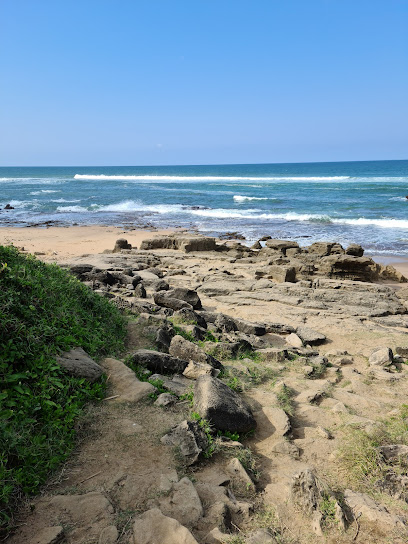
iSimangaliso wetland park
Explore the magnificent iSimangaliso Wetland Park, a UNESCO World Heritage Site with rich biodiversity and breathtaking landscapes.
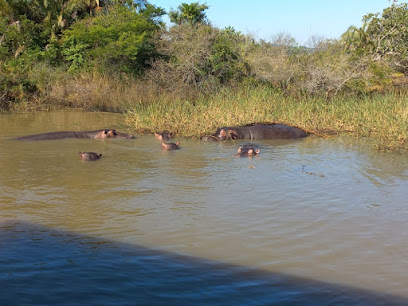
St. Lucia Wetlands
Explore the breathtaking St. Lucia Wetlands, a UNESCO World Heritage Site teeming with diverse wildlife and stunning natural beauty.

Unmissable attractions to see
Jesser Point
Explore the natural beauty of Jesser Point, a coastal park in South Africa, perfect for relaxation, picnics, and breathtaking ocean views.
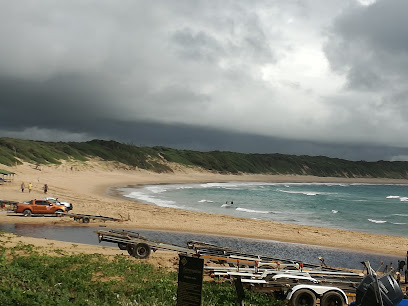
Adventure Mania - Sodwana Bay Scuba Diving
Experience the underwater wonders of Sodwana Bay with Adventure Mania, your gateway to incredible scuba diving in South Africa's marine paradise.
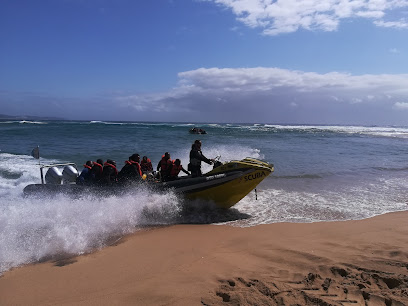
Sodwana Bay Lodge Scuba Centre
Experience the breathtaking underwater beauty of Sodwana Bay at the renowned Sodwana Bay Lodge Scuba Centre, South Africa's diving paradise.
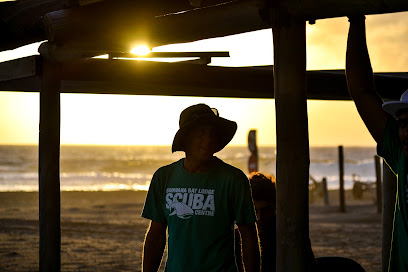
Sodwana Bay
Explore the breathtaking beauty of Sodwana Bay, a premier destination for snorkeling, diving, and beach relaxation on South Africa's stunning coast.
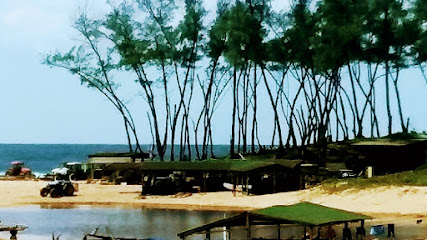
eMshophi Campsite (uMkhuze Game Reserve)
Experience the wild beauty of the eMshophi Campsite in uMkhuze Game Reserve, a serene retreat for nature lovers in Isimangaliso Wetland Park.
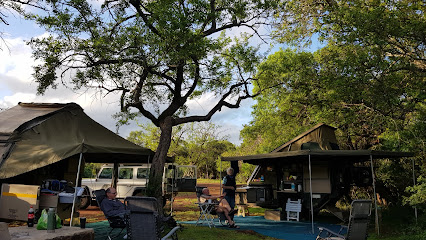
Mantuma Camp
Explore the stunning landscapes and abundant wildlife at Mantuma Camp, a tranquil escape in the heart of South Africa's wilderness.
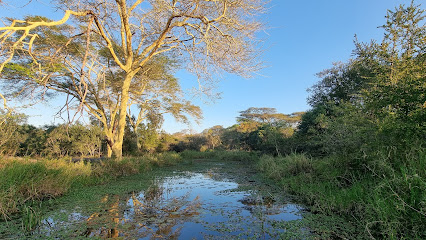
St.lucia Birds & Birding
Explore the stunning avian diversity of St. Lucia with expert-guided birding tours in one of South Africa's most beautiful natural environments.
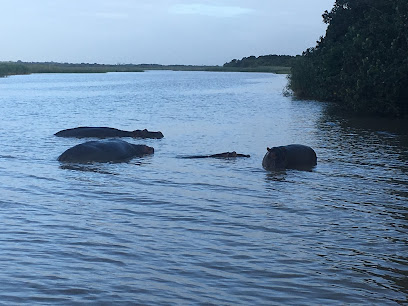
Thonga Trails
Experience the breathtaking beauty of Thonga Trails, a premier hiking destination in Sodwana Bay, showcasing rich biodiversity and stunning coastal views.
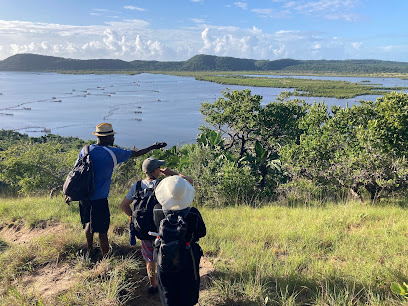
Snake Pharm Dumazulu
Discover the fascinating world of reptiles at Snake Pharm Dumazulu, a premier tourist attraction in Hluhluwe, South Africa.
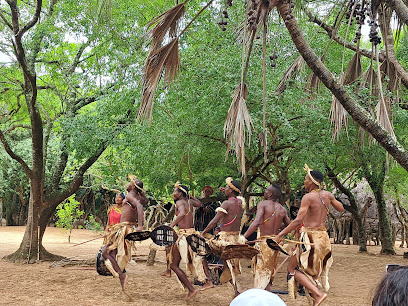
Wild Tomorrow Conservation Centre
Discover the Wild Tomorrow Conservation Centre, where passion for wildlife conservation meets stunning natural beauty in Sungulwane.
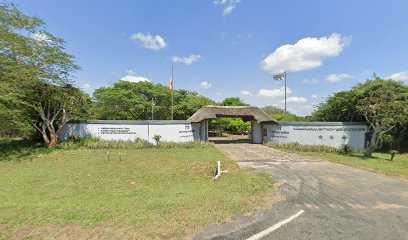
Charters Creek Jetty
Experience the serene beauty of Charters Creek Jetty at Lake St. Lucia, where nature and tranquility await every visitor.
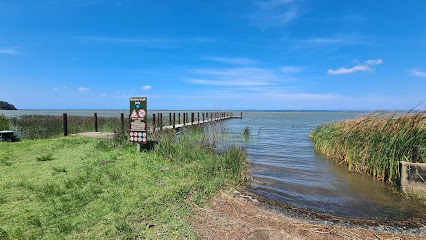
Sodwana River
Experience the serene beauty of Sodwana River, a national forest treasure in Thungwini, South Africa, perfect for nature lovers and adventure seekers.
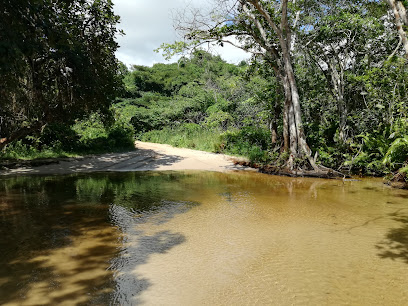
Mpempe Pan
Experience the serene beauty of Mpempe Pan in Giba, a natural paradise perfect for relaxation, picnics, and wildlife observation.
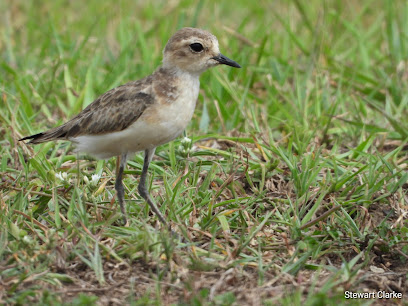
Goehlert Sand Dunes
Experience the breathtaking beauty of Goehlert Sand Dunes in Kwambonambi, a must-visit natural attraction for adventure and photography lovers.
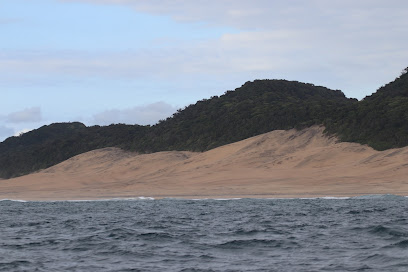
Maverick Fishing Charters
Experience the thrill of fishing at Maverick Fishing Charters in Pongola, South Africa, where adventure meets breathtaking scenery.
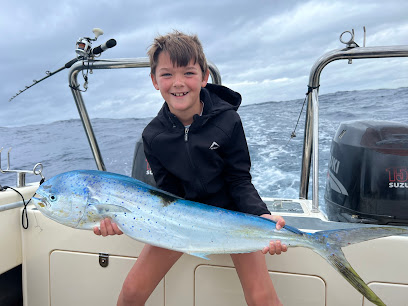
Essential places to dine
John Dory's St Lucia
Experience fresh seafood delights at John Dory's St Lucia – where family dining meets oceanic flavors in a charming coastal town.
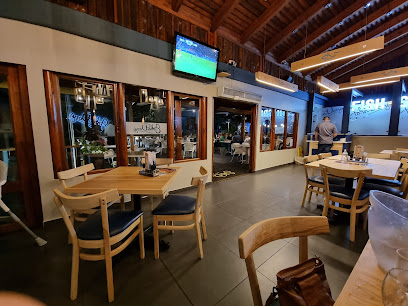
Reef & Dune
Experience authentic South African cuisine at Reef & Dune in St Lucia – where every dish tells a story.
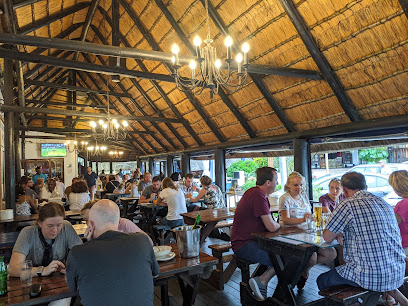
The Ocean Grill Restaurant
Experience the best local cuisine with stunning ocean views at The Ocean Grill Restaurant in St Lucia.
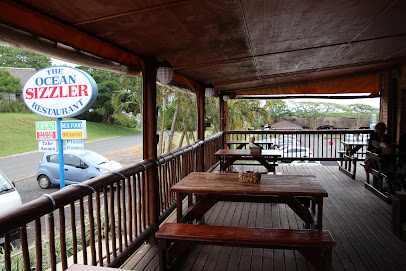
The Lighthouse Restaurant
Experience exquisite local cuisine at The Lighthouse Restaurant in Qondwane, where every meal comes with stunning coastal views.

St Lucia
Experience the natural beauty and vibrant culture of St. Lucia in South Africa's iSimangaliso Wetland Park.
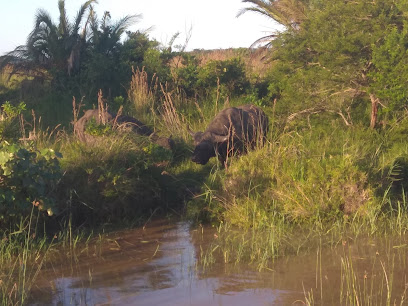
Alfredo's
Experience authentic Italian cuisine at Alfredo's in St Lucia – where every meal is a celebration of flavor and hospitality.
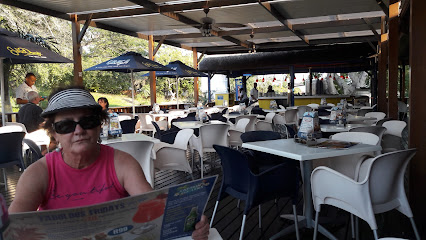
Mseni Restaurant
Experience exquisite local cuisine amidst breathtaking scenery at Mseni Restaurant in iSimangaliso Wetland Park.
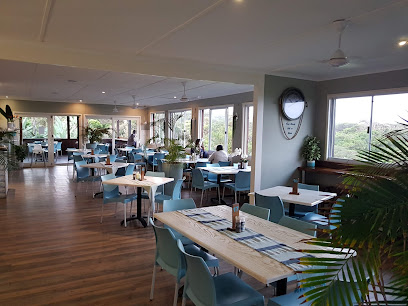
Leatherbacks Restaurant
Experience the best of local cuisine at Leatherbacks Restaurant in Sodwana Bay – where every meal is a taste of paradise.
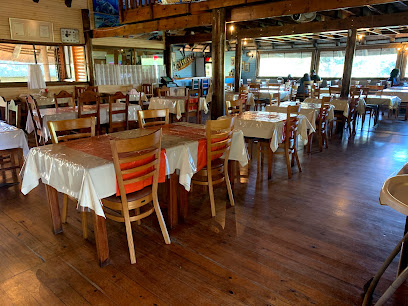
Markets, malls and hidden boutiques
iSimangaliso Wetland Park
Explore iSimangaliso Wetland Park: A South African treasure of diverse ecosystems, stunning landscapes, and rich wildlife experiences.
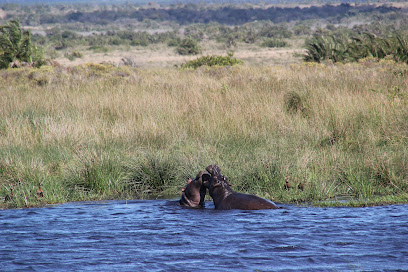
Coral Divers
Discover the underwater wonders of Sodwana Bay at Coral Divers, the ultimate resort hotel and diving center in iSimangaliso Wetland Park.

Crocodile Centre St Lucia
Explore the captivating Crocodile Centre St Lucia, a premier zoo and educational attraction offering unforgettable encounters with reptiles in a serene setting.

Ngweni Railroad Brewery & Cafe
Experience the perfect blend of craft brews and delicious breakfasts at Ngweni Railroad Brewery & Cafe, a must-visit spot in Hluhluwe.
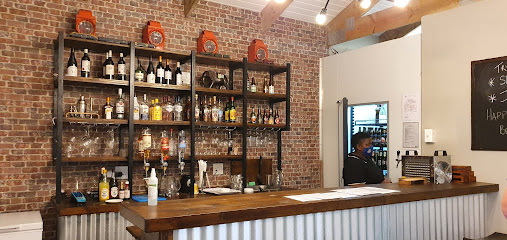
Bhangazi Horse Safaris
Experience the thrill of horseback riding through the stunning landscapes of iSimangaliso Wetland Park at Bhangazi Horse Safaris.
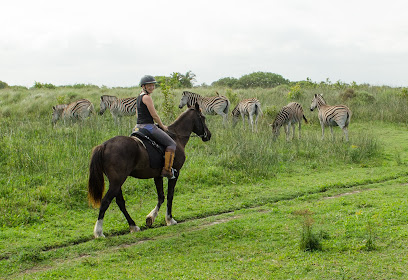
iSimangaliso wetland park
Explore the breathtaking diversity of iSimangaliso Wetland Park, a UNESCO World Heritage site offering stunning landscapes and rich wildlife experiences.
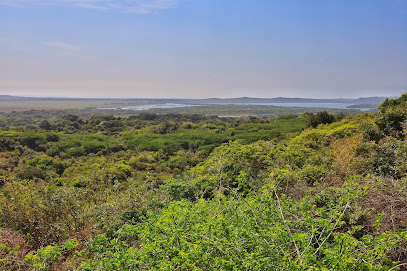
Nyakaza Shopping Centre
Explore local treasures and delightful flavors at Nyakaza Shopping Centre, the heart of shopping in Hluhluwe.

Curiosity African Boutique Store
Explore the Curiosity African Boutique, your gateway to authentic African crafts, art, and unique souvenirs that reflect the continent's rich heritage.
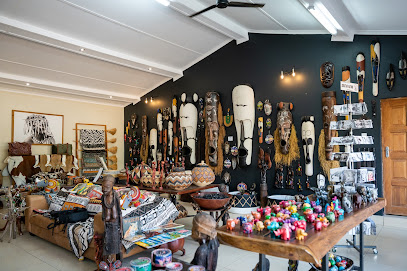
JANNAT CASH & CARRY
Explore Jannat Cash & Carry: Your Gateway to Affordable Shopping in Qondwane, Offering a Wide Range of Quality Products for Every Need.
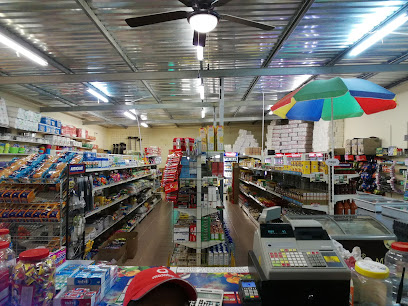
Ithala Centre - Mbazwana
Discover a vibrant shopping experience at Ithala Centre in Mbazwana, where local culture meets modern retail in a welcoming environment.

The Beach House Shop
Discover unique gifts and local artisan treasures at The Beach House Shop in Sodwana Bay, your go-to destination for coastal charm.
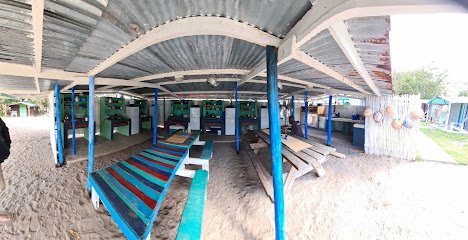
E-Bike & Walking Tours St Lucia
Experience the breathtaking landscapes of St Lucia through eco-friendly e-biking and walking tours that connect you with nature's wonders.
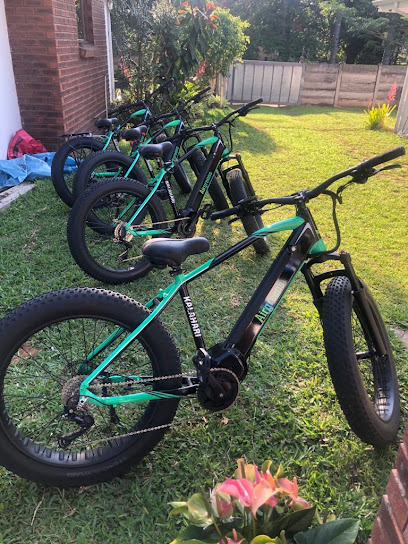
Rustic Ramble Centrre
Explore the Rustic Ramble Centre, your ultimate shopping haven in Qondwane, featuring diverse shops, dining, and local culture.
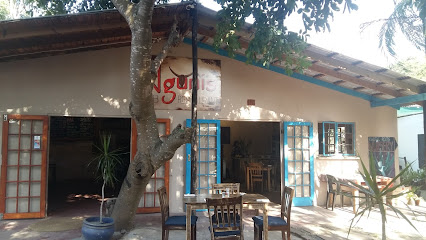
Ants & Mustard
Discover unique gifts and local crafts at Ants & Mustard, a must-visit gift shop in St Lucia, South Africa.
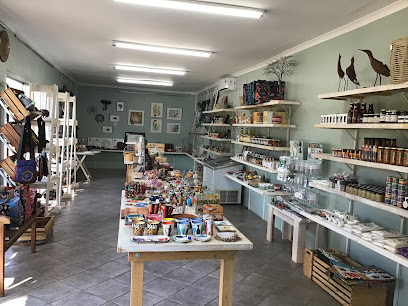
SaveMor Nyakaza
Shop smart at SaveMor Nyakaza, your go-to grocery store in Hluhluwe for quality products at unbeatable prices.
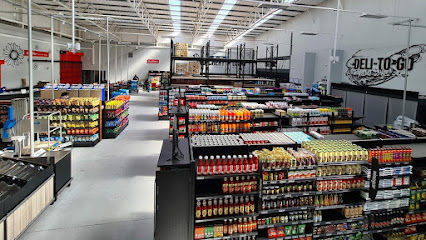
Essential bars & hidden hideouts
Fisherman's Restaurant and Bar
Discover the flavors of the coast at Fisherman's Restaurant and Bar, where fresh seafood meets stunning views in St. Lucia.
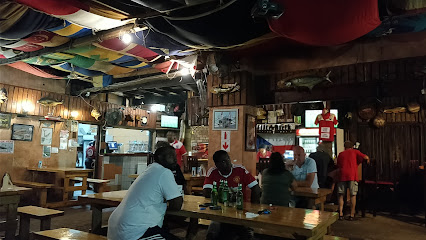
The Lighthouse Restaurant
Discover a culinary oasis at The Lighthouse Restaurant in Qondwane, where exquisite flavors meet breathtaking coastal views.
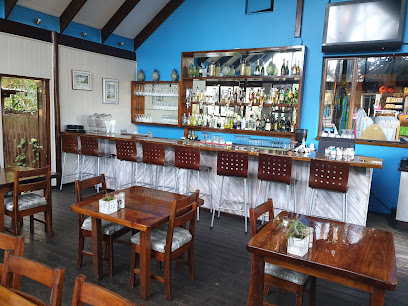
Mseni Restaurant
Experience the flavors of South Africa in a stunning natural setting at Mseni Restaurant, located in the iSimangaliso Wetland Park.
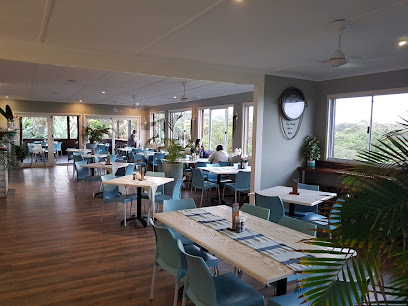
Nguni Restaurant & Pub
Experience authentic South African cuisine at Nguni Restaurant & Pub, where every dish tells a story of local culture and tradition.
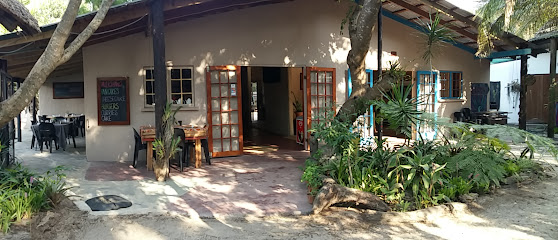
The Tree Pub & Kitchen
Experience the delightful ambiance and culinary offerings at The Tree Pub & Kitchen, a family-friendly spot for great food and drinks in Thungwini.
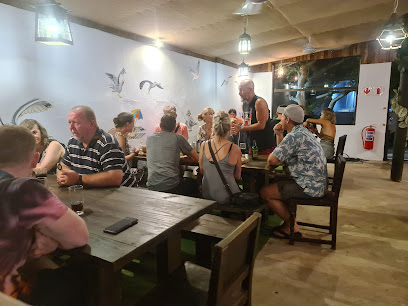
Maak N Jol
Experience the vibrant culinary scene of Thungwini at Maak N Jol, where local flavors and a lively atmosphere come together for unforgettable dining.
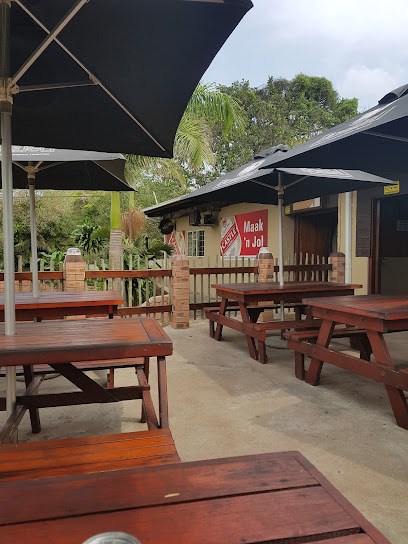
Leatherbacks Restaurant
Experience the flavors of Sodwana Bay at Leatherbacks Restaurant, where local ingredients meet exceptional dining in a breathtaking natural setting.
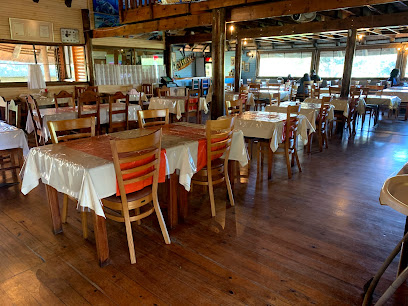
Key West sports Bar
Discover the ultimate sports bar experience at Key West Sports Bar in St. Lucia, where great food, drinks, and live sports unite.
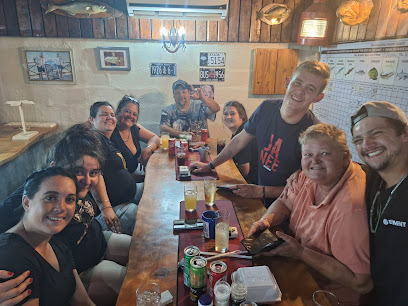
Fabios Ice Cream Parlour Sodwana Bay
Savor the best ice cream at Fabio's Ice Cream Parlour in Sodwana Bay, where delightful flavors meet stunning coastal views.
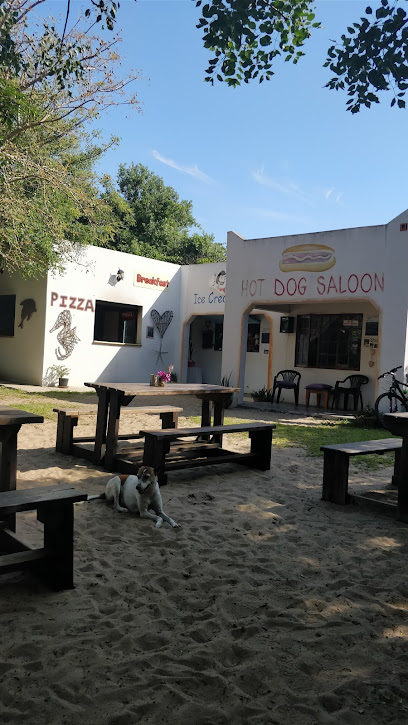
Vusi Bhengu Tavern
Discover the vibrant nightlife at Vusi Bhengu Tavern in Hluhluwe, South Africa, where local culture and a lively atmosphere meet.
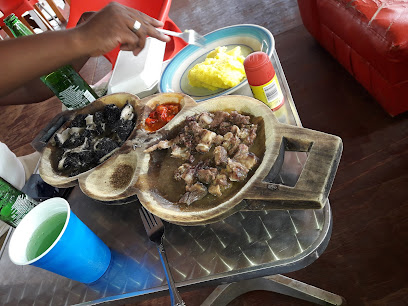
Moreish BISTRO
Experience the flavors of Sodwana Bay at Moreish BISTRO, where local ingredients meet culinary creativity in a warm and inviting setting.

Ntshebe Lounge
Discover Ntshebe Lounge in Mkuze, a vibrant bar offering a lively atmosphere, refreshing drinks, and a taste of local culture.

NGWENYA LIQUOR
Discover Ngwenya Liquor in Jozini: a delightful wine bar offering an exquisite selection of local and international wines in a cozy atmosphere.
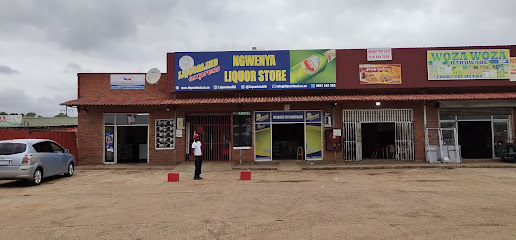
Jettina Tavern
Discover Jettina Tavern, a cozy bar offering a warm atmosphere, local drinks, and delicious bites, perfect for unwinding after your adventures.
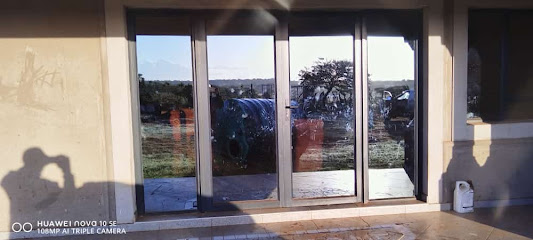
KHUMBUIA UBUSUKU LOUNGE
Discover Khumbuia Ubusuku Lounge in Jozini - your go-to wine bar for a serene evening with fine wines and local charm.

Local Phrases about iSimangaliso Wetland Park
-
- HelloSawubona
[sah-woo-BOH-nah] - GoodbyeHamba kahle
[HAM-bah kah-HLEH] - YesYebo
[YEH-boh] - NoCha
[chah] - Please/You're welcomeNgiyacela
[ngy-YAH-seh-lah] - Thank youNgiyabonga
[ngy-yah-BOHNG-gah] - Excuse me/SorryUxolo
[oo-SOH-loh] - How are you?Unjani?
[oon-JAH-nee] - Fine. And you?Ngiyaphila. Wena?
[ngy-yah-PEE-lah. WEH-nah] - Do you speak English?Ukhuluma isiNgisi?
[oo-koo-LOO-mah ee-SEE-ng-EE-see] - I don't understandAngazi
[ahng-GAH-zee]
- HelloSawubona
-
- I'd like to see the menu, pleaseNgicela ukubona imenyu, ngyabonga
[ng-GEE-seh-lah oo-koo-BOH-nah ee-meh-NYOO, ngy-yah-BOHNG-gah] - I don't eat meatAnginamasi
[ahng-gee-nah-MAH-see] - Cheers!Ongakhokheli!
[ohng-gah-KOH-kheh-lee] - I would like to pay, pleaseNgicela ukulipha, ngyabonga
[ng-GEE-seh-lah oo-koo-LEE-pah, ngy-yah-BOHNG-gah]
- I'd like to see the menu, pleaseNgicela ukubona imenyu, ngyabonga
-
- Help!Usizo!
[oo-SEE-zoh] - Go away!Hamba!
[HAM-bah] - Call the Police!Thumela amaphoyisa!
[too-MEH-lah ah-mah-poh-YEE-sah] - Call a doctor!Thumela idokotela!
[too-MEH-lah ee-doh-koh-TEH-lah] - I'm lostNgizolile
[ng-GEE-zoh-LEE-leh] - I'm illNgisick
[ng-GEE-sick]
- Help!Usizo!
-
- I'd like to buy...Ngicela ukuthenga...
[ng-GEE-seh-lah oo-koo-THEH-ngah] - I'm just lookingNgicela ukubuka kuphela
[ng-GEE-seh-lah oo-koo-BOO-kah koo-PHEH-lah] - How much is it?Kuyaphi?
[koo-YAH-pee] - That's too expensiveLokhu kungakwazi
[LOH-koo koo-NGAH-kwah-zee] - Can you lower the price?Ungakwazi ukushintsha isilinganiso?
[oo-NGAH-kwah-zee oo-koo-SHEENT-shah ee-see-ling-gah-NEE-soh]
- I'd like to buy...Ngicela ukuthenga...
-
- What time is it?Ngubani isikhathi?
[ngoo-BAH-nee ee-SEE-kah-tee] - It's one o'clockKuyabonakala kushumi
[koo-yah-boh-nah-KAH-lah koo-SHOO-mee] - Half past (10)Kwadesa (10)
[kwah-DEH-sah (10)] - MorningEbusuku
[eh-boo-SOO-koo] - AfternoonEmini
[eh-MEE-nee] - EveningEbusuku
[eh-boo-SOO-koo] - YesterdayIzolo
[ee-ZOH-loh] - TodayNamuhla
[nah-MOOH-lah] - TomorrowKusasa
[koo-SAH-sah] - 1Kunye
[koo-NYEH] - 2Kubili
[koo-BEE-lee] - 3Kuthathu
[koo-TAH-too] - 4Kune
[koo-NEH] - 5Kuhlanu
[koo-HLAH-noo] - 6Isithupha
[ee-SEE-too-pah] - 7Isikhombisa
[ee-SEE-khohm-BEE-sah] - 8Isishagalombili
[ee-see-shah-gah-LOHM-bee-lee] - 9Isishagalolunye
[ee-see-shah-gah-LOH-loo-nyeh] - 10Isigidi
[ee-SEE-gee-dee]
- What time is it?Ngubani isikhathi?
-
- Where's a/the...?Kuphi...
[koo-PHEE] - What's the address?Iyawuphi indawo?
[ee-yah-WOO-phee een-DAH-woh] - Can you show me (on the map)?Ungangifunda?
[oo-NGAH-ngi-FOON-dah] - When's the next (bus)?Iyiphi iyeza?
[ee-YEE-pee ee-YEH-zah] - A ticket (to ....)Ingcebo (ekhaya)
[ing-GCHEH-boh (eh-KHAH-yah)]
- Where's a/the...?Kuphi...
History of iSimangaliso Wetland Park
-
The iSimangaliso Wetland Park has a rich prehistory, with evidence of human activity dating back thousands of years. Archaeological findings suggest that early humans, including the San and Khoi peoples, inhabited this region, living off the land and using the abundant natural resources for sustenance.
-
Around the 10th century, the iSimangaliso Wetland Park area became a significant hub for maritime trade. Arab, Persian, and Indian traders frequented the eastern coast of Africa, including the area now encompassed by the park, exchanging goods such as gold, ivory, and spices. These interactions led to cultural exchanges and the formation of early coastal settlements.
-
In the early 19th century, the Zulu Kingdom, under the leadership of King Shaka, expanded its territory to include the iSimangaliso Wetland Park area. The Zulu people utilized the land for grazing and agriculture, and the region became an integral part of their kingdom. The Zulu culture, with its rich traditions and strong warrior ethos, left a lasting impact on the area.
-
During the 19th century, European explorers and colonizers, including the Portuguese, Dutch, and British, arrived in the iSimangaliso Wetland Park area. These encounters led to significant changes, including the introduction of new technologies and the establishment of trade routes. However, they also brought conflicts and challenges to the indigenous communities and their way of life.
-
In 1895, the area now known as iSimangaliso Wetland Park was first recognized for its ecological significance and was proclaimed as a nature reserve. This was one of the earliest conservation efforts in South Africa, aimed at protecting the diverse ecosystems and the unique flora and fauna of the region.
-
In 1999, iSimangaliso Wetland Park was declared a UNESCO World Heritage Site. This designation recognized the park's exceptional natural beauty, ecological diversity, and cultural significance. The park's unique combination of coastal dunes, wetlands, savannas, and marine ecosystems makes it a critical area for conservation and biodiversity.
-
The iSimangaliso Wetland Park is home to several local communities, including the Zulu and Thonga people, who have lived in harmony with the environment for generations. Their cultural heritage, traditional knowledge, and practices are integral to the park's identity. Efforts have been made to involve these communities in conservation and tourism initiatives, ensuring that their way of life is preserved and respected.
-
In recent decades, iSimangaliso Wetland Park has become a focal point for modern conservation efforts. Collaborative projects between government agencies, non-governmental organizations, and local communities aim to protect the park's unique ecosystems while promoting sustainable tourism. These efforts include wildlife conservation, anti-poaching initiatives, and habitat restoration projects.
iSimangaliso Wetland Park Essentials
-
iSimangaliso Wetland Park is located in the KwaZulu-Natal province of South Africa. The nearest major airport is King Shaka International Airport in Durban, approximately 240 kilometers away. From Durban, you can rent a car, take a bus, or arrange for a private transfer to the park. The drive typically takes around 3 hours. Alternatively, you can fly into Richards Bay Airport, which is about 80 kilometers from the park, and then take a taxi or shuttle service to iSimangaliso.
-
Within iSimangaliso Wetland Park, the best way to get around is by car. Renting a vehicle gives you the freedom to explore the park’s diverse ecosystems at your own pace. Guided tours are also available and can be a great way to experience the park with the expertise of a local guide. Public transportation options within the park are limited, so it’s advisable to arrange your own transport.
-
The official currency in South Africa is the South African Rand (ZAR). Credit and debit cards are widely accepted in hotels, restaurants, and larger stores. However, it’s advisable to carry some cash for smaller establishments, entry fees, and tips. ATMs are available in nearby towns such as St Lucia, but it's wise to withdraw sufficient cash before entering the more remote areas of the park.
-
iSimangaliso Wetland Park is generally safe for tourists, but it’s important to take standard precautions. Avoid walking alone at night, especially in isolated areas. Be cautious of your belongings in public places. Nearby towns such as St Lucia are generally safe but stay vigilant. Be aware that wildlife can pose risks; always follow park guidelines and keep a safe distance from animals.
-
In case of an emergency, dial 10111 for police assistance and 10177 for medical emergencies. It's advisable to have travel insurance that covers medical emergencies and evacuation if necessary. The nearest hospital is in Richards Bay, around 80 kilometers from the park. For minor health issues, there are pharmacies in nearby towns like St Lucia.
-
Fashion: Do wear lightweight, breathable clothing and comfortable walking shoes. Avoid bright colors that may attract wildlife. Religion: Do respect local customs and traditions, although the area is not particularly conservative. Public Transport: Do use reputable tour operators if you opt for guided tours. Don't rely on public transport within the park. Greetings: Do greet people with a handshake and a friendly smile. Eating & Drinking: Do try local dishes and seafood, especially in nearby coastal towns. Don't litter; always dispose of your trash properly.
-
To experience iSimangaliso like a local, spend time in the nearby town of St Lucia, where you can enjoy local markets, restaurants, and boat tours. Visit the park early in the morning or late in the afternoon for the best wildlife sightings. Engage with park rangers and guides; they can provide invaluable insights into the park's ecology and history. Don’t miss the chance to take a boat tour on the St Lucia Estuary to see hippos and crocodiles in their natural habitat.
Nearby Cities to iSimangaliso Wetland Park
-
Things To Do in Manzini
-
Things To Do in Malkerns
-
Things To Do in Maputo
-
Things To Do in Matola
-
Things To Do in Mhlume
-
Things To Do in Mbabane
-
Things To Do in Nelspruit
-
Things To Do in Durban
-
Things To Do in Mokhotlong
-
Things To Do in Thaba-Tseka
-
Things To Do in Butha-Buthe
-
Things To Do in Leribe
-
Things To Do in Johannesburg
-
Things To Do in Pretoria
-
Things To Do in Teyateyaneng









